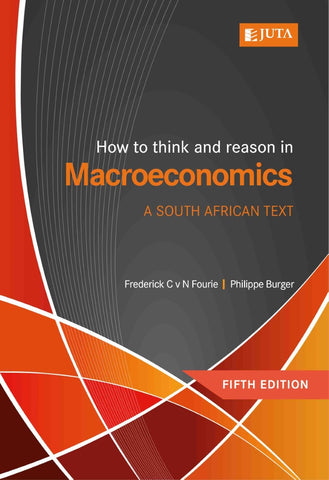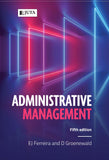
How to Think and Reason in Macroeconomics, 5th Edition (Print)
Product Details:
| Author(s): | Fourie, FC,Burger, P |
| Page count: | 600 |
| ISBN: | 9781485130475 |
| Languages(s): | English, |
| Year Published: | 2019 |
| Categories: | Economics, Academic, Academic, Academic, |
| Type: |
About this publication
How does the South African economy work? Why do macroeconomic variables change? So what if they do? What happens next? How do economic processes and policy institutions really work? Which data must I use? What can policy do? And then the big questions: How can we reduce unemployment and maintain low inflation? What then about poverty, inequality, inclusive growth and development in South Africa?
The answers are found in How to think and reason in Macroeconomics – A South African text, a popular university textbook with very positive feedback from students, lecturers and practitioners. This fifth edition is completely up-to-date and comprehensive. It combines well-informed intuitive understanding with solid economic theory plus a concrete understanding of South African economic issues, processes, institutions and data. In this way it prepares you to analyse macroeconomic events and policies in a globalised and development context – and understand different perspectives in policy and political-economic debates.
Key features:
- Accessible analysis, theory, and diagrams, combining intuitive understanding and sophisticated analysis.
- A choice of learning routes with different levels of difficulty and mathematics.
- Real-world economic reasoning skills, not dry theory.
- Online animations that provide unique insights into macroeconomic fluctuations and shocks.
- Explicit continuous focus on South Africa as an open economy in an African and global context shaped by China, Trump’s trade wars, and Brexit.
- Theoretical and policy analysis of unemployment, inflation, low growth, and inclusive growth, as well as the National Development Plan.
- Analytical case studies of the global financial crisis, quantitative easing, the Euro crisis, and the Eskom crisis.
- First-hand, freshly updated insights into how South African policy institutions, processes, and instruments work.
- Clear guides to access relevant South African data sources, with useful data tips.
- Thorough integration of the structural social and economic realities (notably inequality and poverty) of South Africa as a middle-income country.
- Incorporation of broader considerations such as human development, inclusive growth and sustainable development.
Content
Part I:
- How does the economy work?
- Why macroeconomics? An introduction to the issues
- The basic model I: consumers, producers and government The basic model II: financial institutions, money and interest rates
- The basic model III: the foreign sector
- Understanding sectoral coherence and constraints: how to use macroeconomic identities
- A model for an inflationary economy: aggregate demand and supply
- Extending the model: inflation and policy reactions
- Macroeconomics in the very long run: growth theory
Part II:
- Macroeconomic policy, unemployment, inflation and growth in an open economy
- Monetary policy: the role of the Reserve Bank
- Fiscal policy: the role of the government
- Policy problems: coordination, lags and schools of thought
- Inflation, unemployment and low growth: causes and remedies
We Also Recommend





